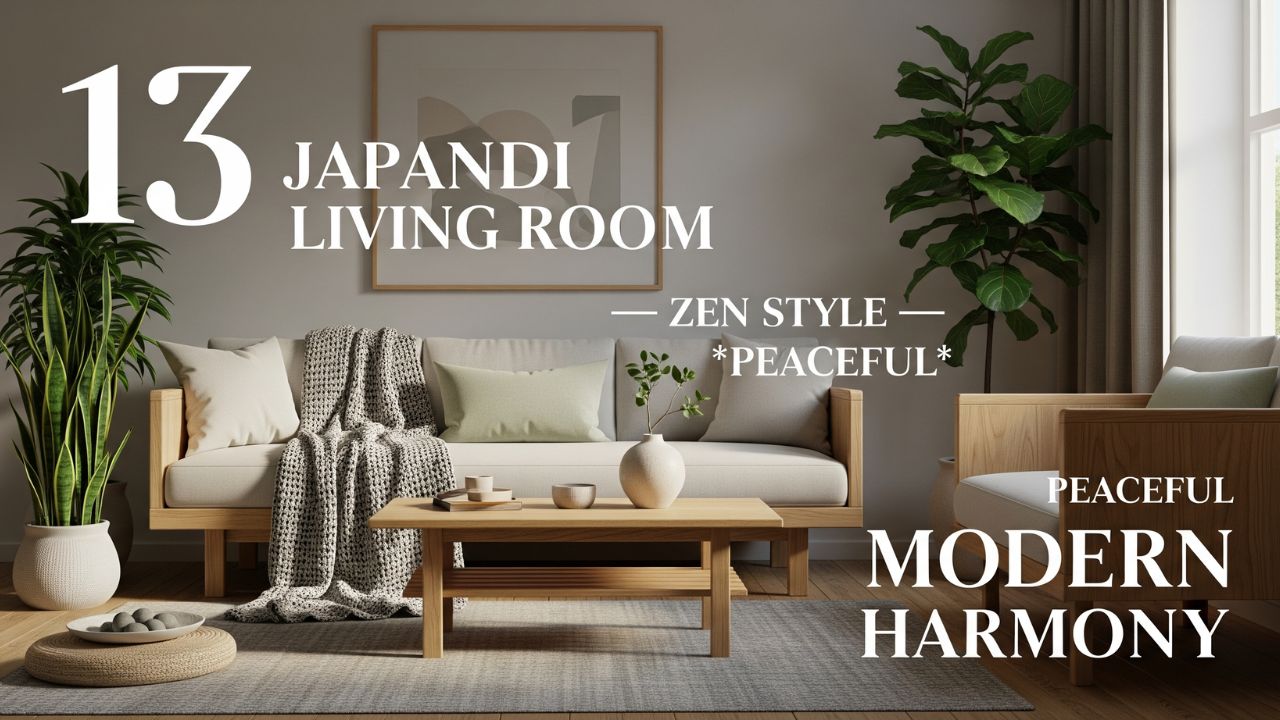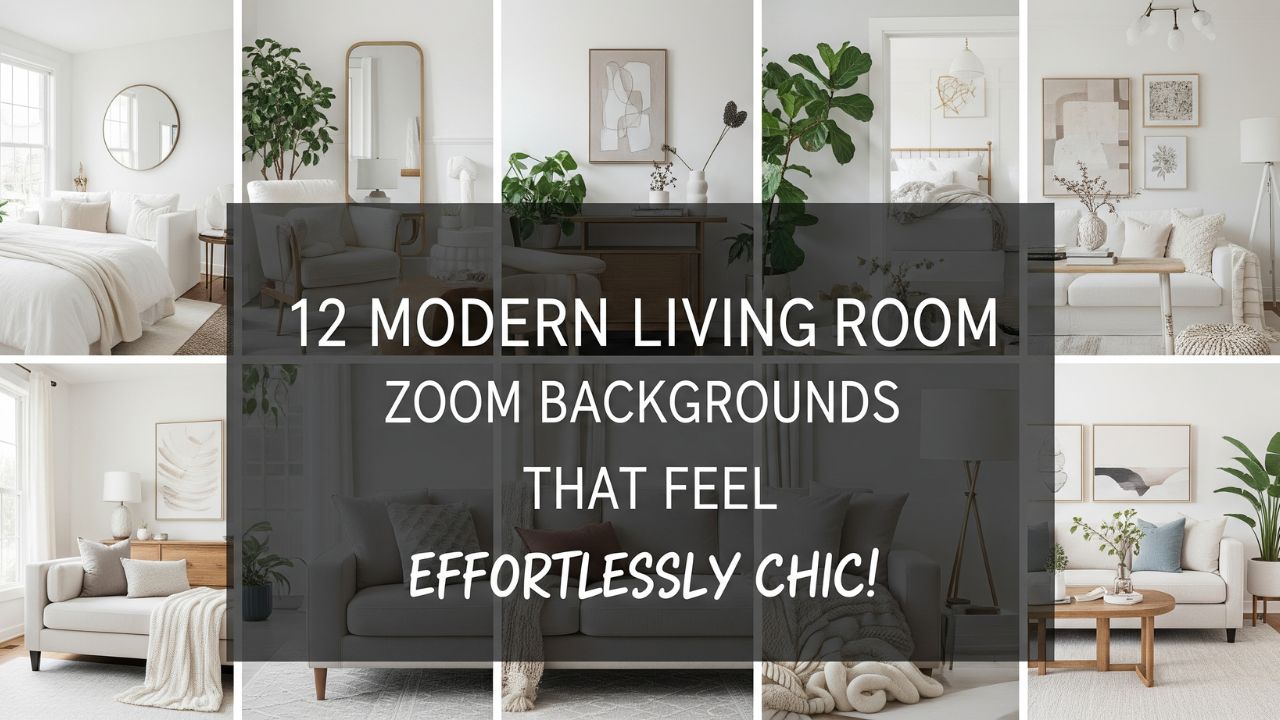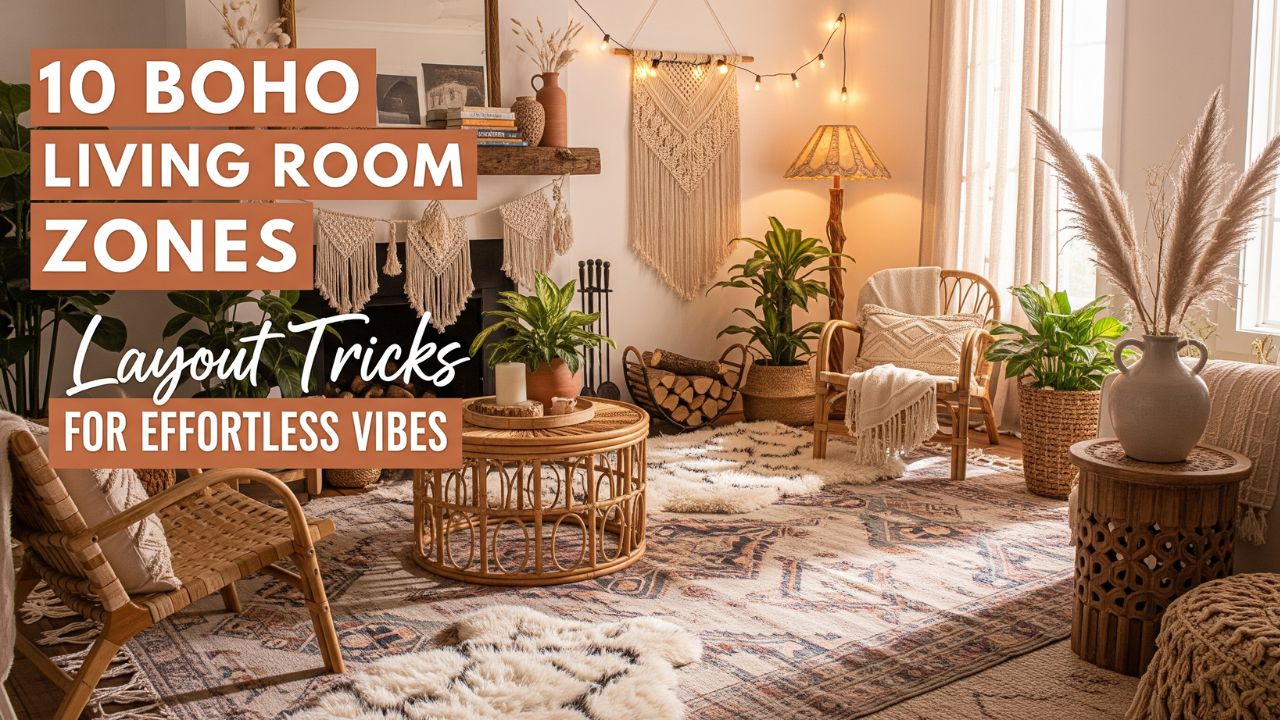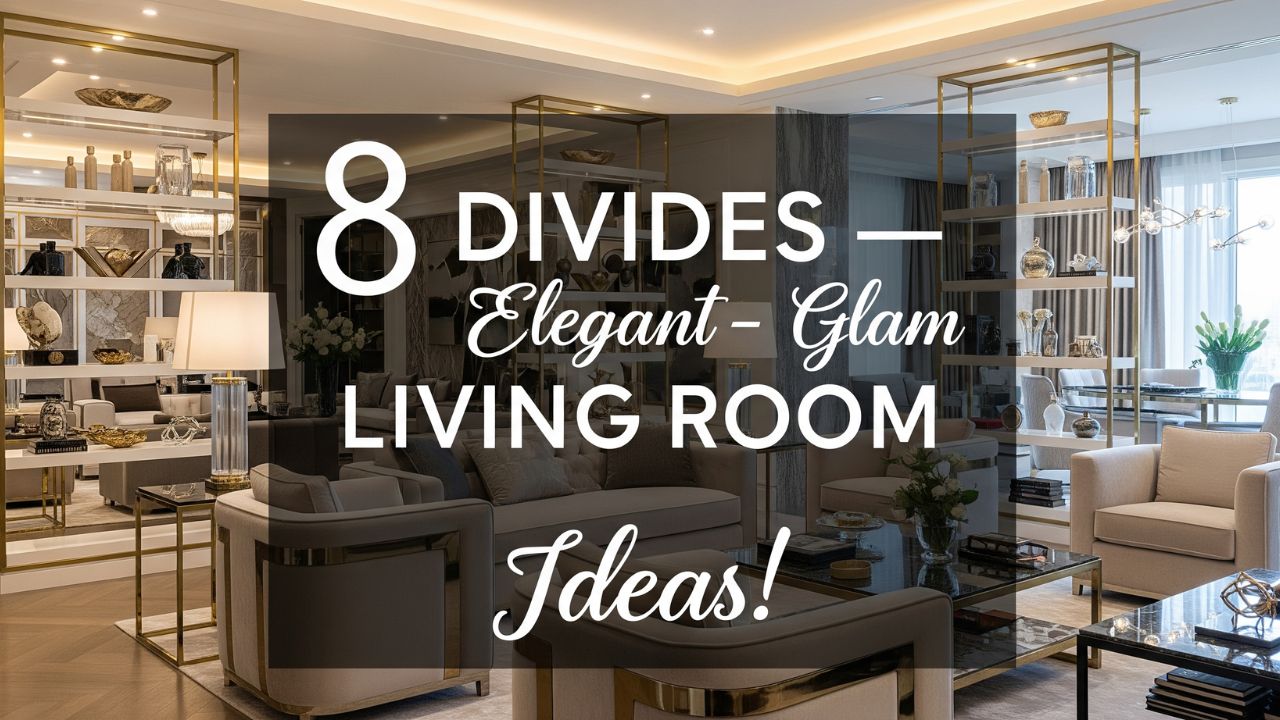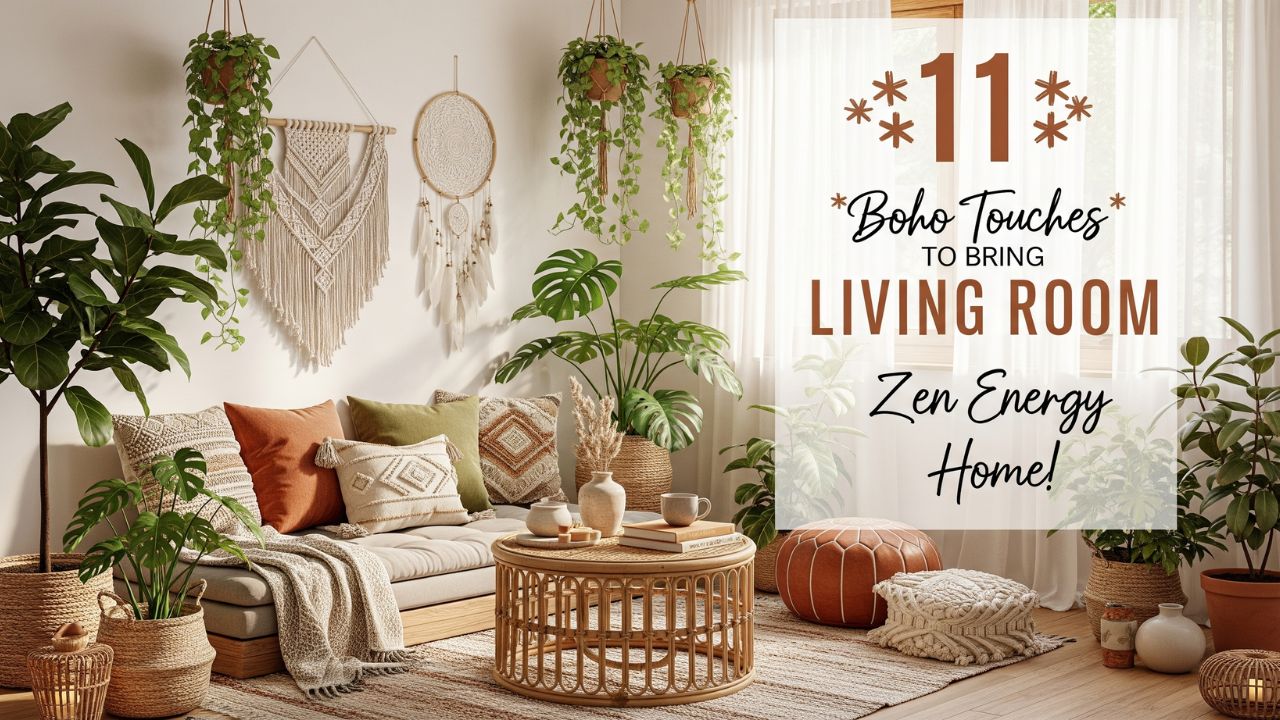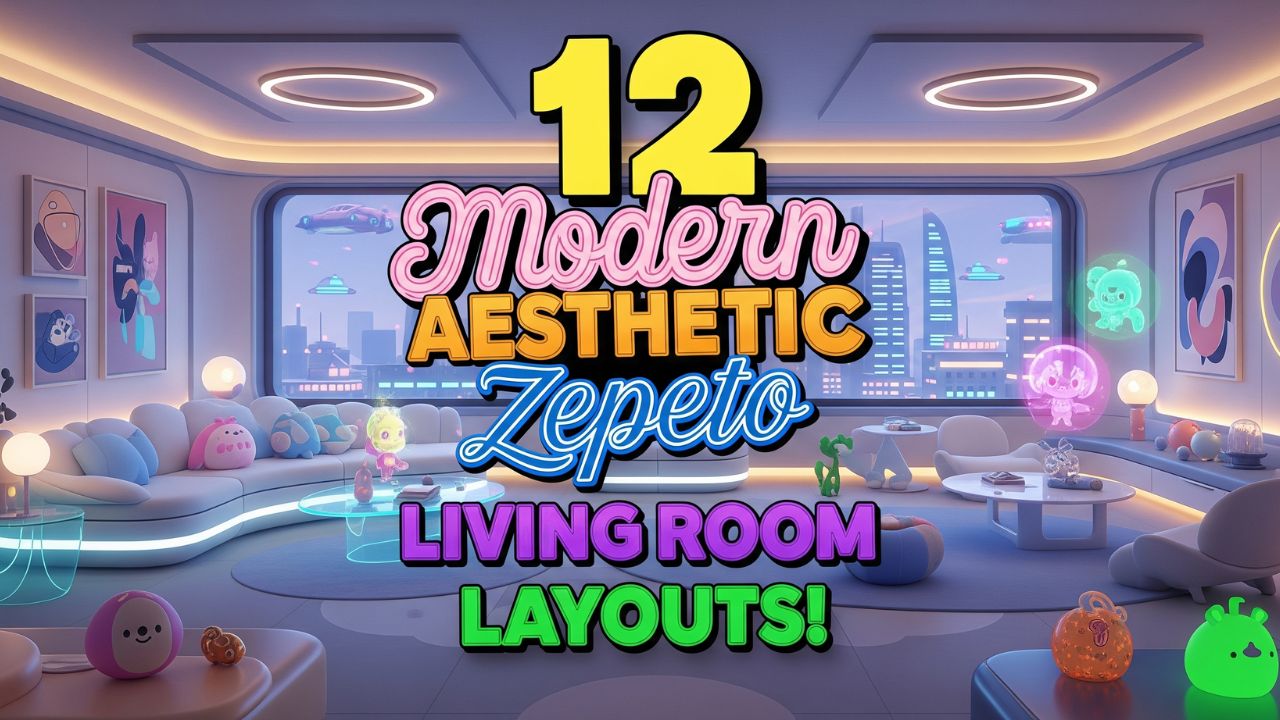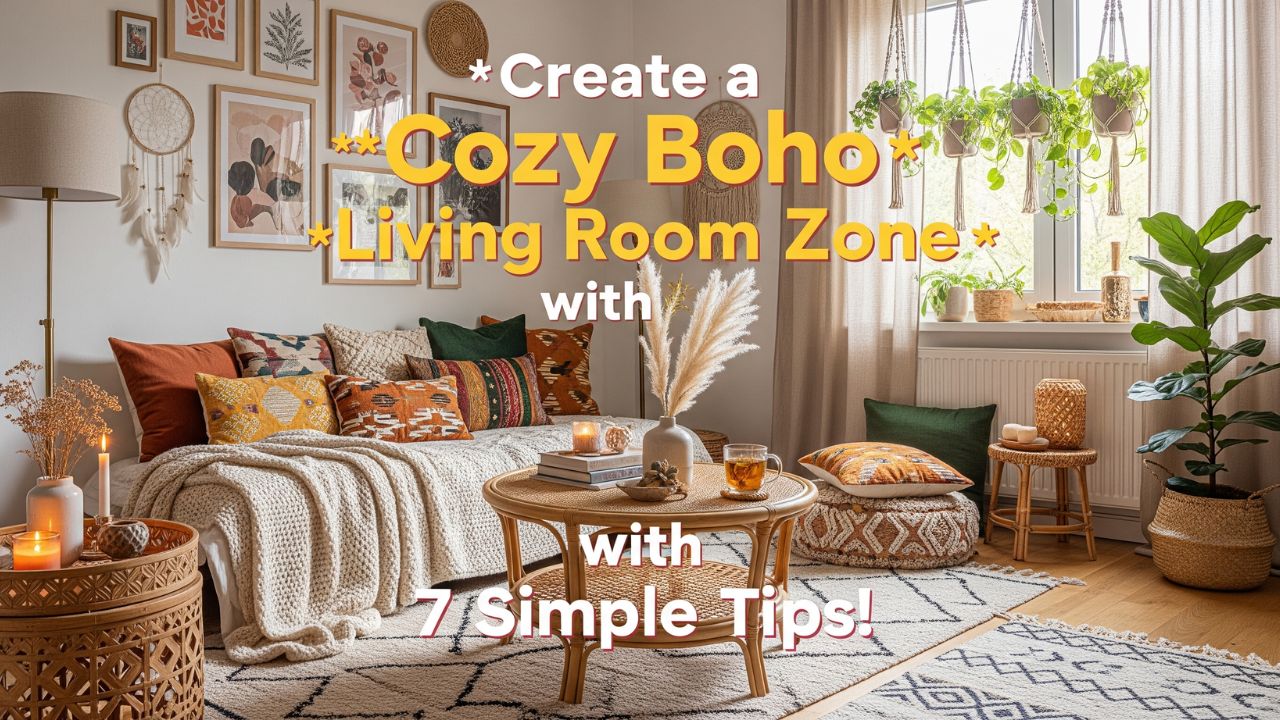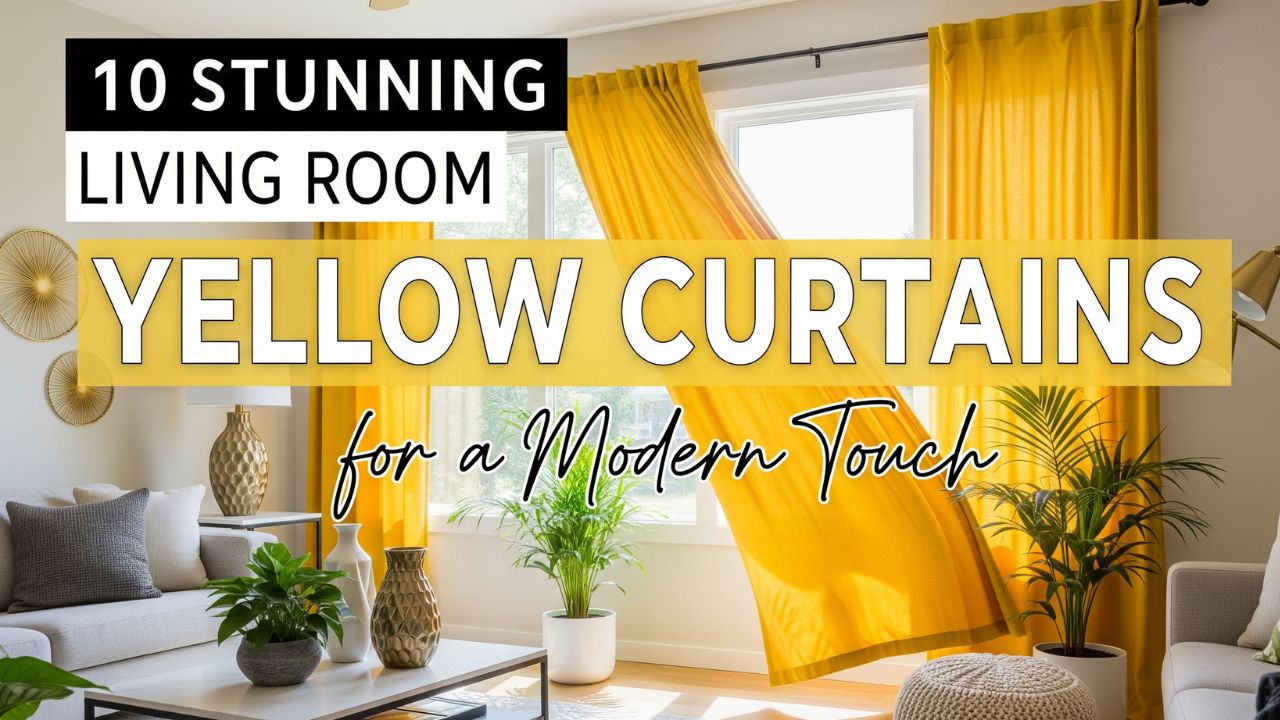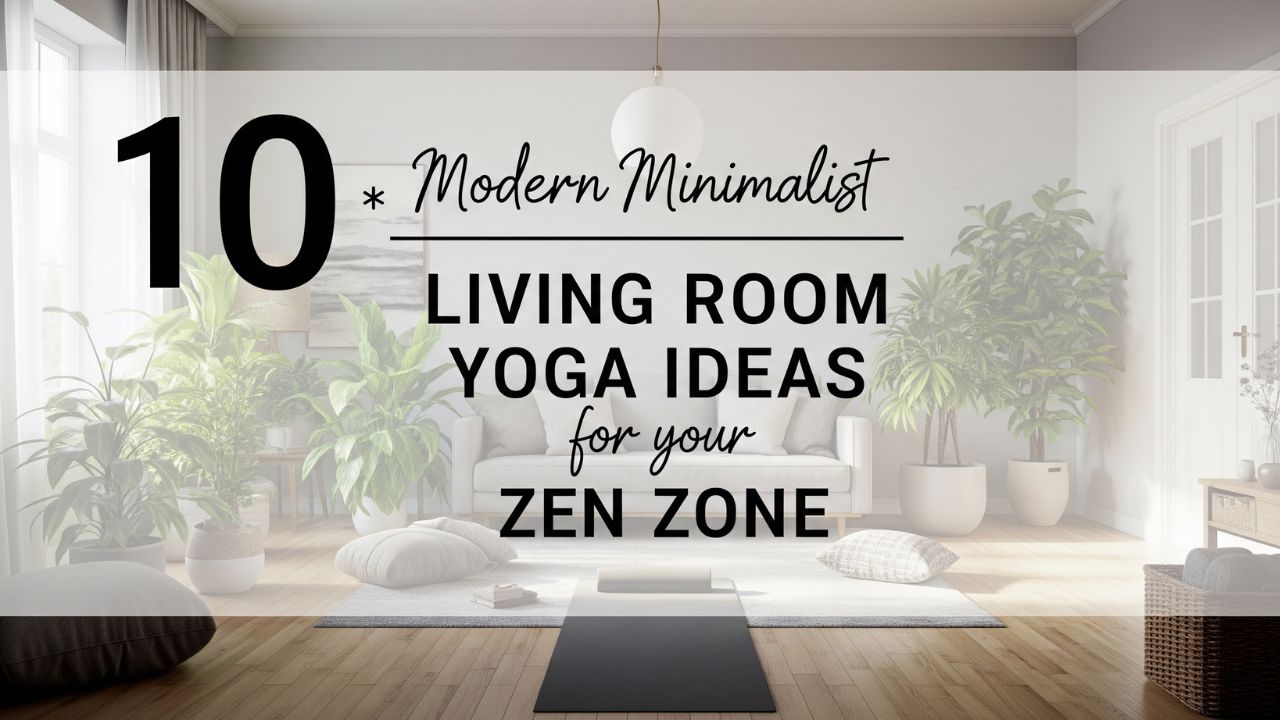What’s the secret to making a hardwood floor look expensive, cozy, and design-forward—all at once?
It’s not the sofa. Not the coffee table. It’s the rug.
A well-chosen rug doesn’t just fill empty space—it defines it. It anchors the room, sets the tone, and adds warmth that hardwood alone can’t deliver. Yet, styling rugs on hardwood floors can feel tricky. Too small, and it disappears; too bold, and it dominates.
Here’s the good news: interior designers have reinvented rug styling for modern homes. From layered textures to asymmetrical placements, there are fresh, creative ways to elevate your living room without covering up those beautiful hardwood planks.
Let’s explore 10 modern ways to style living room rugs on hardwood floors—plus some surprising myths, expert tips, and design facts you probably didn’t know.
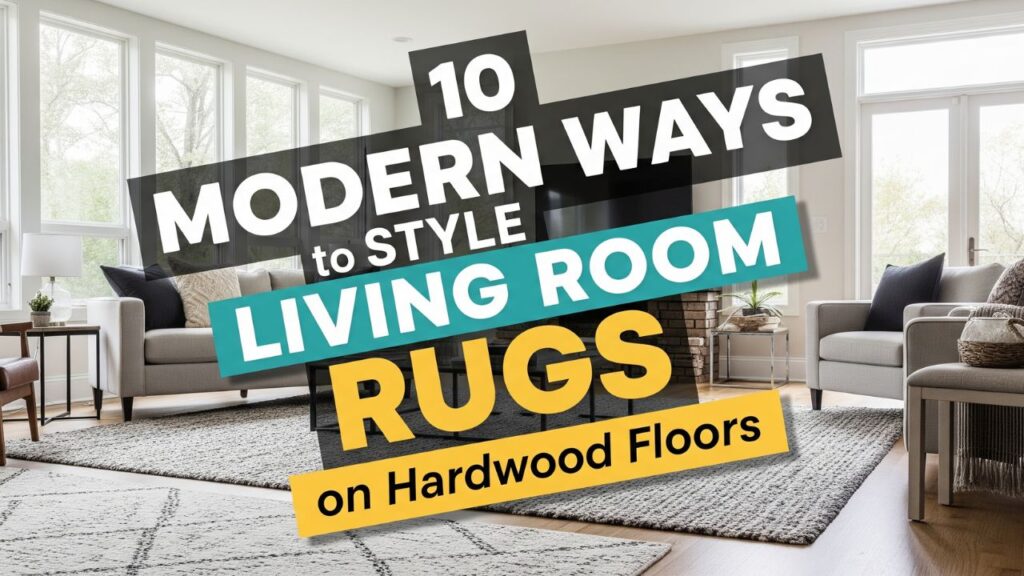
Table of Contents
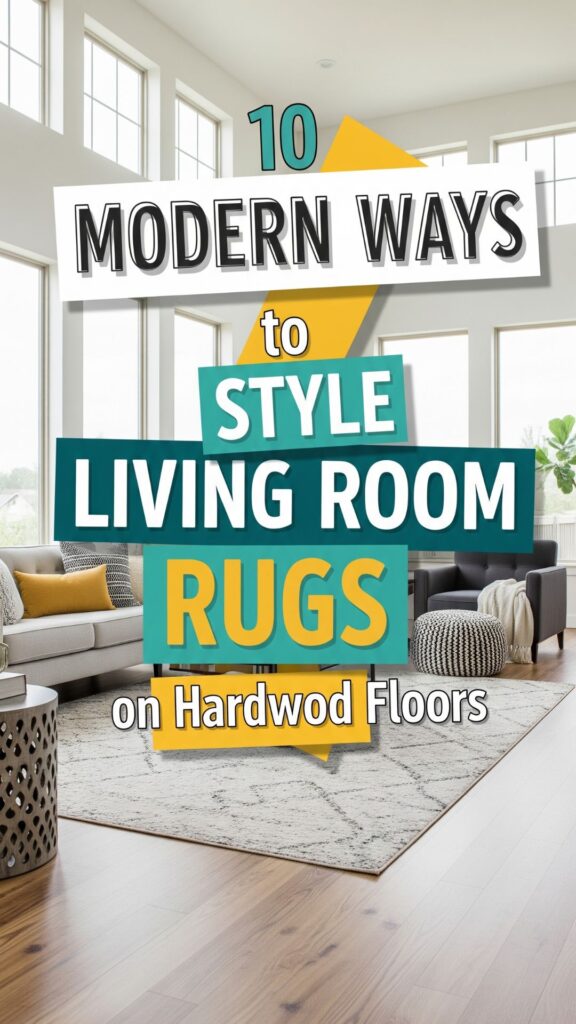
10 Ways to Style Living Room Rugs on Hardwood Floors
1. The Layered Look
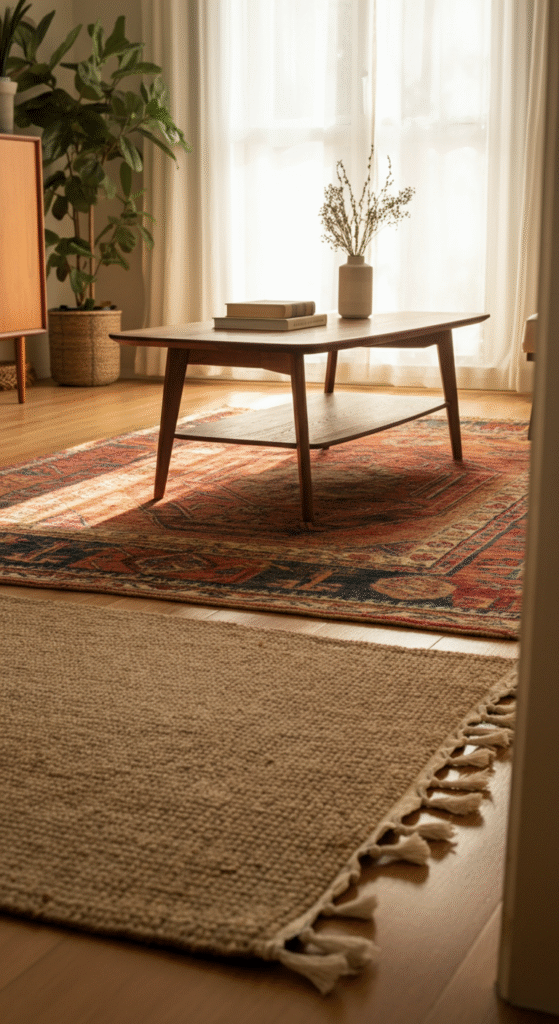
Layering rugs is one of the biggest modern trends—and for good reason. It adds instant depth, warmth, and character.
Start with a neutral jute or sisal rug as the base. Then place a smaller, patterned rug (think Moroccan or geometric) on top. The result? A designer-approved contrast that makes your space feel intentionally curated.
Do you know? Layering rugs was once considered a “bohemian mistake,” but now it’s a favorite trick of top stylists for blending textures and zones.
2. Go Oversized for a Grand Statement
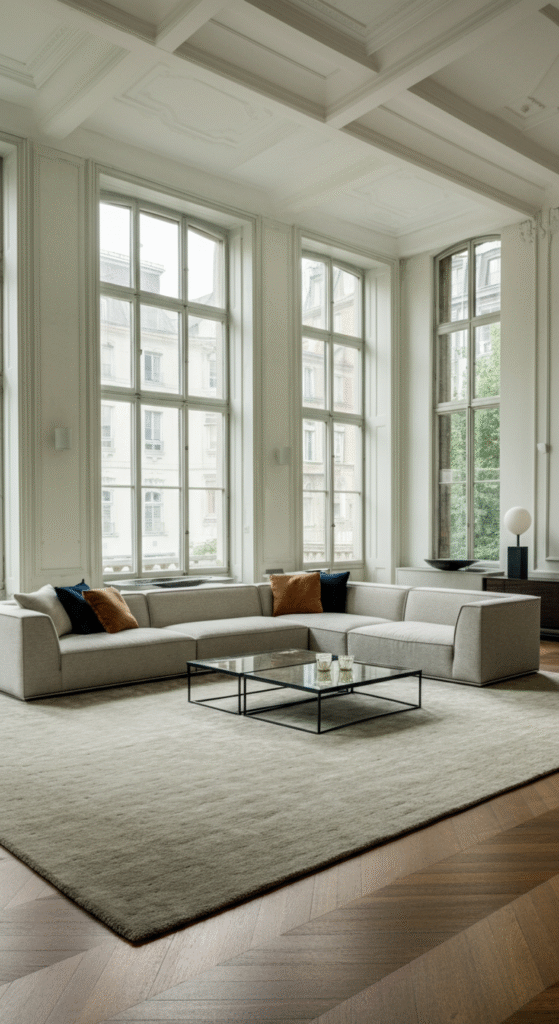
A common myth says your rug should fit just under the coffee table. But that’s outdated advice.
Modern interiors favor oversized rugs—large enough that all major furniture pieces (sofa, chairs, coffee table) sit fully or partially on it. This unifies the space and gives your hardwood floors a luxurious frame rather than chopping them into sections.
Interesting fact: Designers often size rugs 12–18 inches smaller than the room’s perimeter to create a “border” of exposed hardwood that looks high-end.
3. Highlight the Grain with Light Contrasts
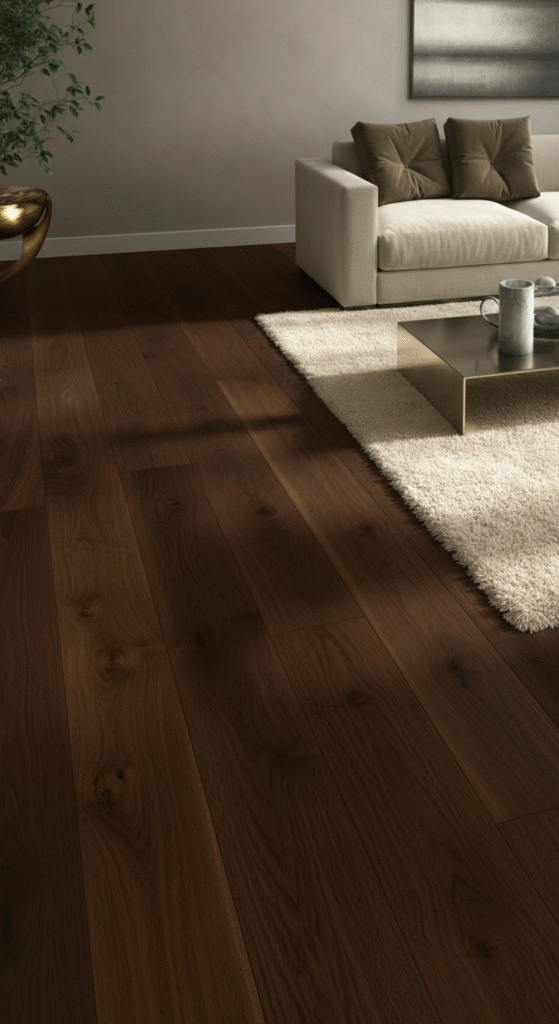
If your hardwood floors are rich walnut or mahogany, go for a light-colored rug in ivory, oatmeal, or soft gray.
The contrast highlights the natural grain of your floor, letting the wood shine instead of hiding it. For lighter oak floors, flip the script—choose deeper, moodier tones like navy or charcoal to add grounding depth.
This subtle play between light and dark can completely transform the atmosphere of your living room.
4. The Art of Asymmetry
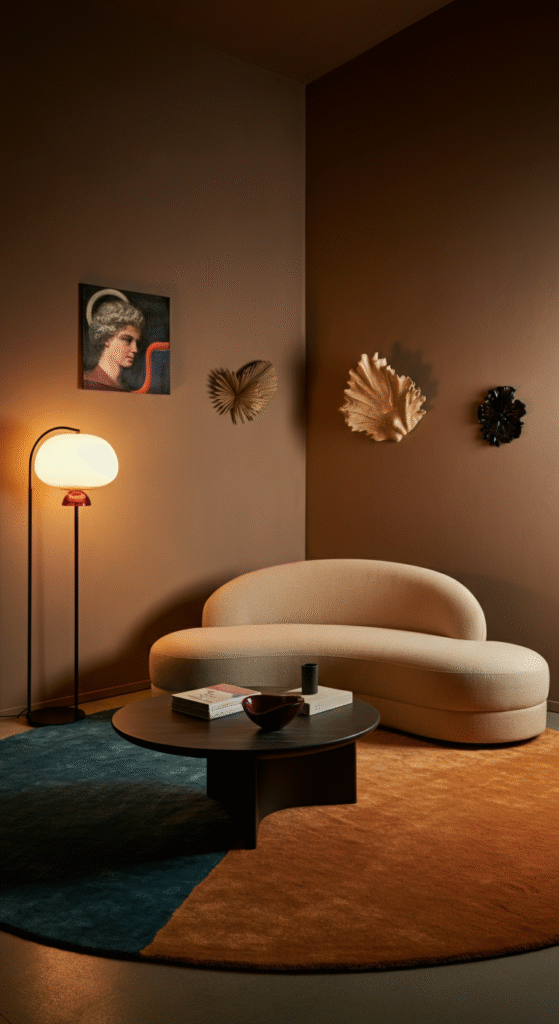
Forget perfect symmetry—modern design embraces the unexpected.
Try positioning your rug off-center, aligning it more with the seating area than the room’s exact dimensions. This technique draws attention to specific zones and makes your decor feel intentionally laid-back.
Pair an asymmetrical rug layout with a sculptural coffee table or irregular-shaped sofa for a truly contemporary aesthetic.
Myth Buster: Rugs don’t have to be “centered” to look balanced. Strategic imbalance can actually make a room feel more dynamic.
5. Layer with Furniture Legs Correctly
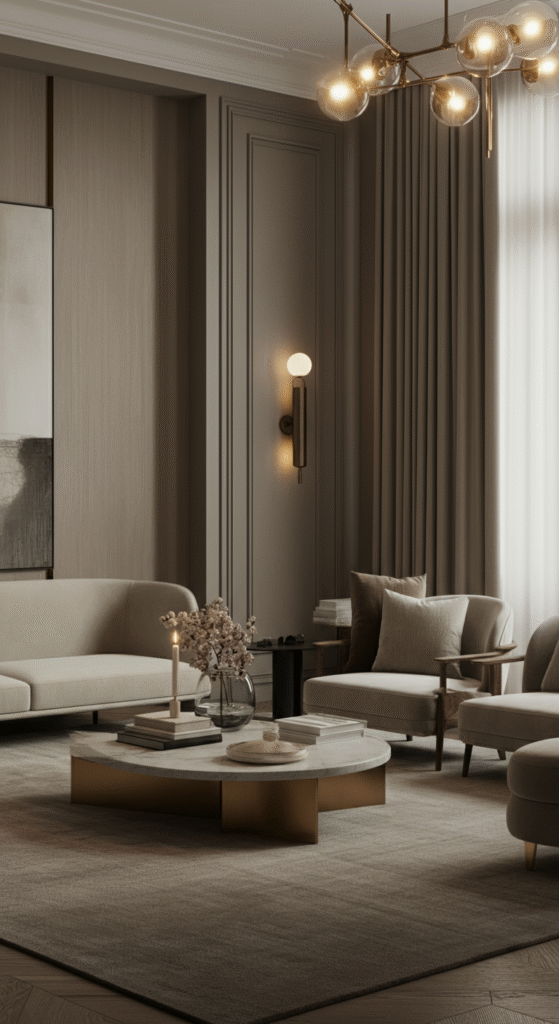
Furniture placement is everything. The general rule today? Front legs on, back legs off.
This approach anchors your furniture visually to the rug while still showing off plenty of hardwood. It’s clean, modern, and practical—especially for open-concept living areas.
Avoid having only your coffee table on the rug—it makes the space look unfinished.
Do you know? Interior stylists often measure “18 inches of breathing room” from the rug edge to walls for ideal proportions.
6. Embrace Round Rugs for Fluid Movement
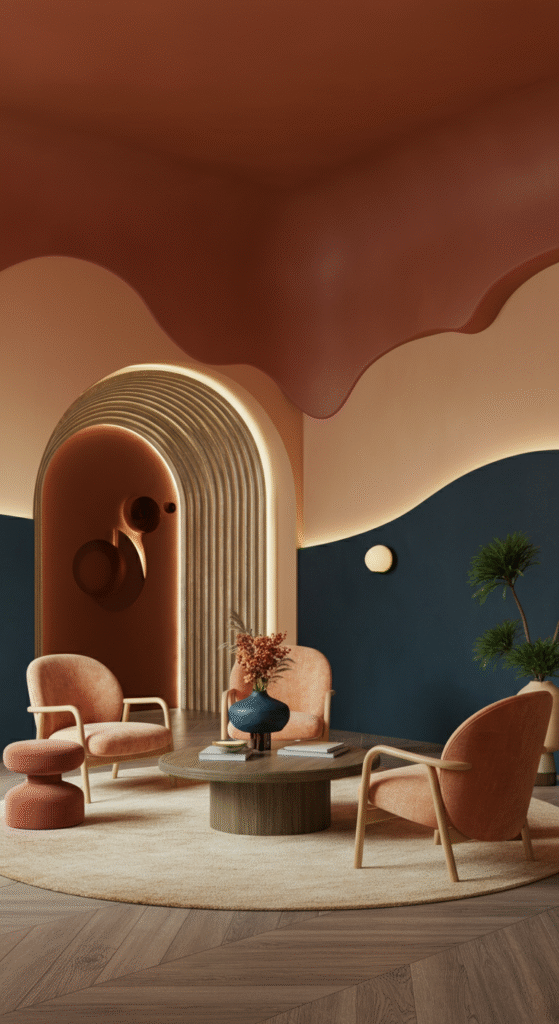
Rectangular rugs dominate, but round rugs are the under-appreciated stars of modern interiors.
They soften the sharp angles of furniture and floors, adding a sense of flow. Round rugs look stunning beneath circular coffee tables, accent chairs, or even centered under a chandelier.
If your hardwood layout features straight lines and grid patterns, a round rug introduces balance and a sense of gentle motion.
7. Go Monochrome for a Minimalist Touch
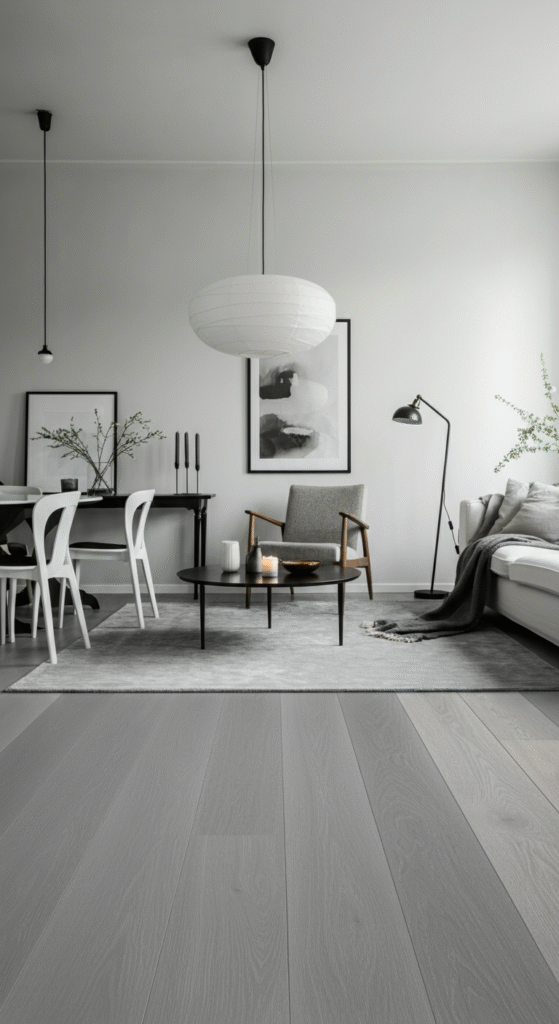
Monochrome doesn’t mean boring—it means intentional.
Pair similar tones between your rug and hardwood for a serene, high-end aesthetic. For example, ash wood floors with a soft gray rug create a seamless, modern flow that feels both minimal and elegant.
This technique is ideal for Scandinavian-inspired homes, where simplicity, texture, and tone rule over color.
Interesting fact: Studies show neutral color palettes make rooms appear 30% larger and calmer to the human eye.
8. Experiment with Natural Textures
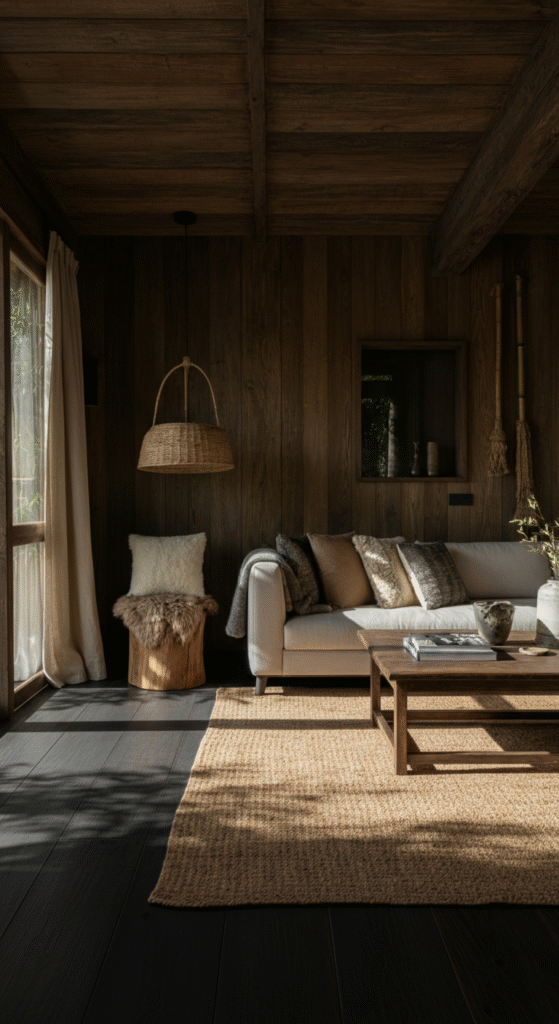
Nature never goes out of style.
Jute, bamboo, wool, and sisal rugs blend beautifully with hardwood floors. These organic materials enhance the tactile experience of your room—coarse fibers meeting smooth wood grain.
They’re also durable, eco-friendly, and surprisingly versatile. Whether your style leans rustic, coastal, or modern organic, natural fiber rugs harmonize perfectly with wood flooring.
Design Tip: Try layering a jute base with a softer, smaller wool rug to combine comfort and natural aesthetics.
9. Add Color Through Vintage or Persian Rugs
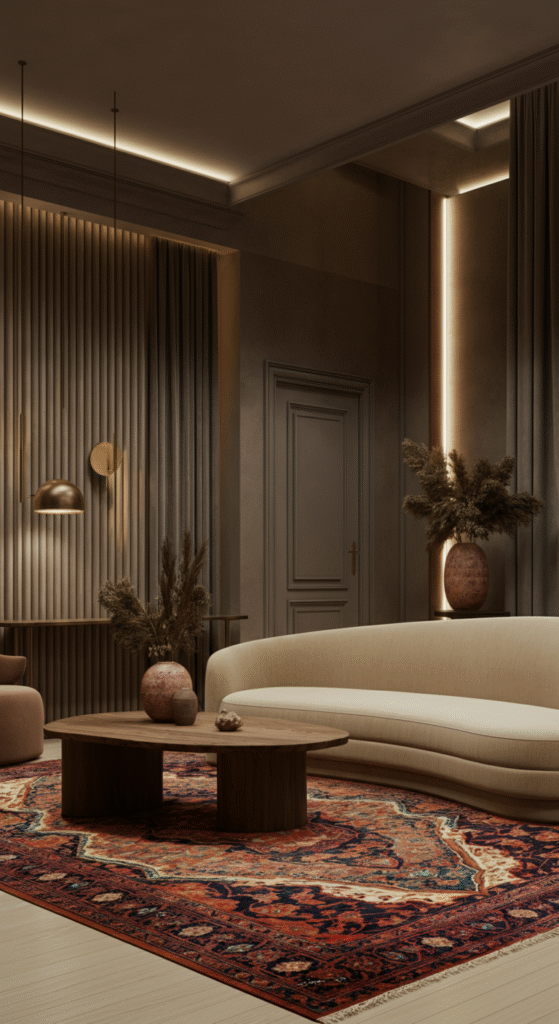
While modern design often celebrates minimalism, vintage rugs bring life, heritage, and personality to your space.
Persian, Turkish, or hand-woven oriental rugs with intricate patterns introduce color without overwhelming the space. On hardwood floors, they create a sense of contrast and storytelling—like art you can walk on.
If you’re hesitant about bold tones, start small with a runner or accent rug, then expand as your confidence grows.
Do you know? Many antique rug patterns were designed to mimic nature—each flower, vine, or shape carries symbolic meaning tied to prosperity, love, or protection.
10. Frame the Space with Dual Rugs
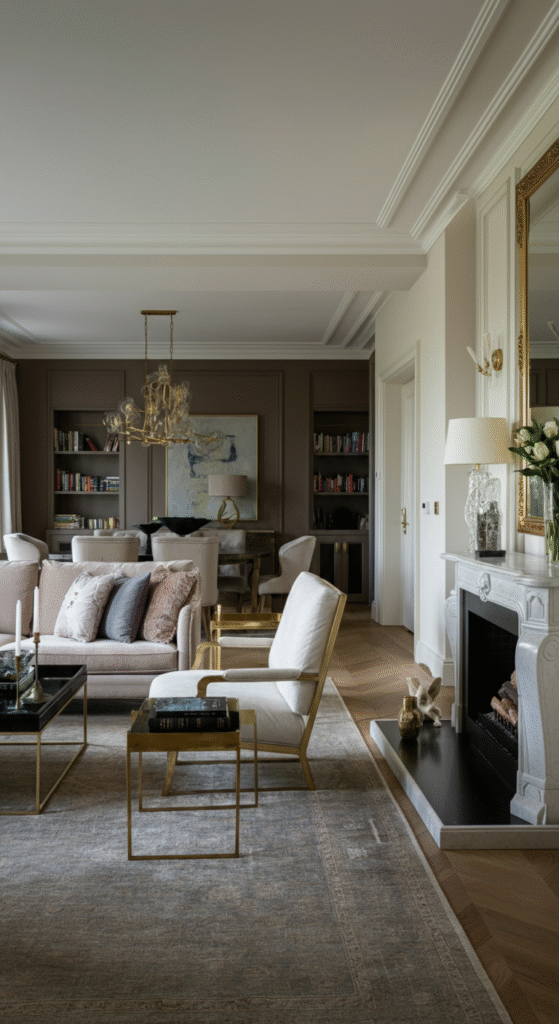
For larger living rooms, two rugs can be better than one.
Use dual rugs to visually divide zones—one for the seating area, one for reading or lounging. This maintains the open flow of hardwood floors while giving each area its own identity.
Choose rugs that complement each other in tone or pattern but aren’t identical. Think of them as siblings, not twins.
This layered zoning approach works beautifully for multi-functional spaces or studio apartments where every square foot counts.
Bonus Tip: Don’t Forget the Rug Pad
While not as glamorous, a rug pad is essential. It protects your hardwood from scratches, prevents slipping, and adds plushness underfoot.
Do you know? A good rug pad can extend the lifespan of your rug by up to 40%—and it’s often the hidden difference between “good” and “great” living room design.
Conclusion
Hardwood floors are timeless—but the right rug transforms them from beautiful to unforgettable.
From asymmetrical layouts to vintage pops of color, every styling choice is a chance to tell your home’s story. Rugs are not just accessories—they’re emotional anchors that tie your living room together, define your lifestyle, and reflect your personality.
So, the next time you roll out a rug, remember: it’s more than décor. It’s design in motion, harmony in texture, and the quiet foundation of every great living room.
Frequently Asked Questions (FAQs)
Should I place a rug under all furniture in my living room?
Not necessarily. The modern rule is to keep front legs of sofas and chairs on the rug and the back legs off. This visually anchors your seating area without hiding too much of your hardwood flooring.
What size rug works best for hardwood floors?
Choose a rug that leaves 12–18 inches of exposed flooring around the edges of the room. This creates a natural “frame” of hardwood, giving your space a balanced and proportionate look. Oversized rugs often make the room feel more cohesive.
How do I stop my rug from sliding on hardwood floors?
Use a non-slip rug pad underneath. It prevents movement, protects the wood from scratches, and adds extra cushioning for comfort. Avoid rubber-backed rugs that can discolor hardwood over time.
What rug colors look best on dark hardwood floors?
For dark floors like walnut or mahogany, choose light-toned rugs—ivory, beige, gray, or pastel shades. These create contrast, brighten the space, and draw attention to the floor’s natural grain.
Can I layer rugs on hardwood floors?
Yes, absolutely. Layering rugs is a trendy and effective way to add depth and texture. Start with a larger neutral rug (like jute or sisal) as your base, and layer a smaller, patterned rug on top for contrast.
